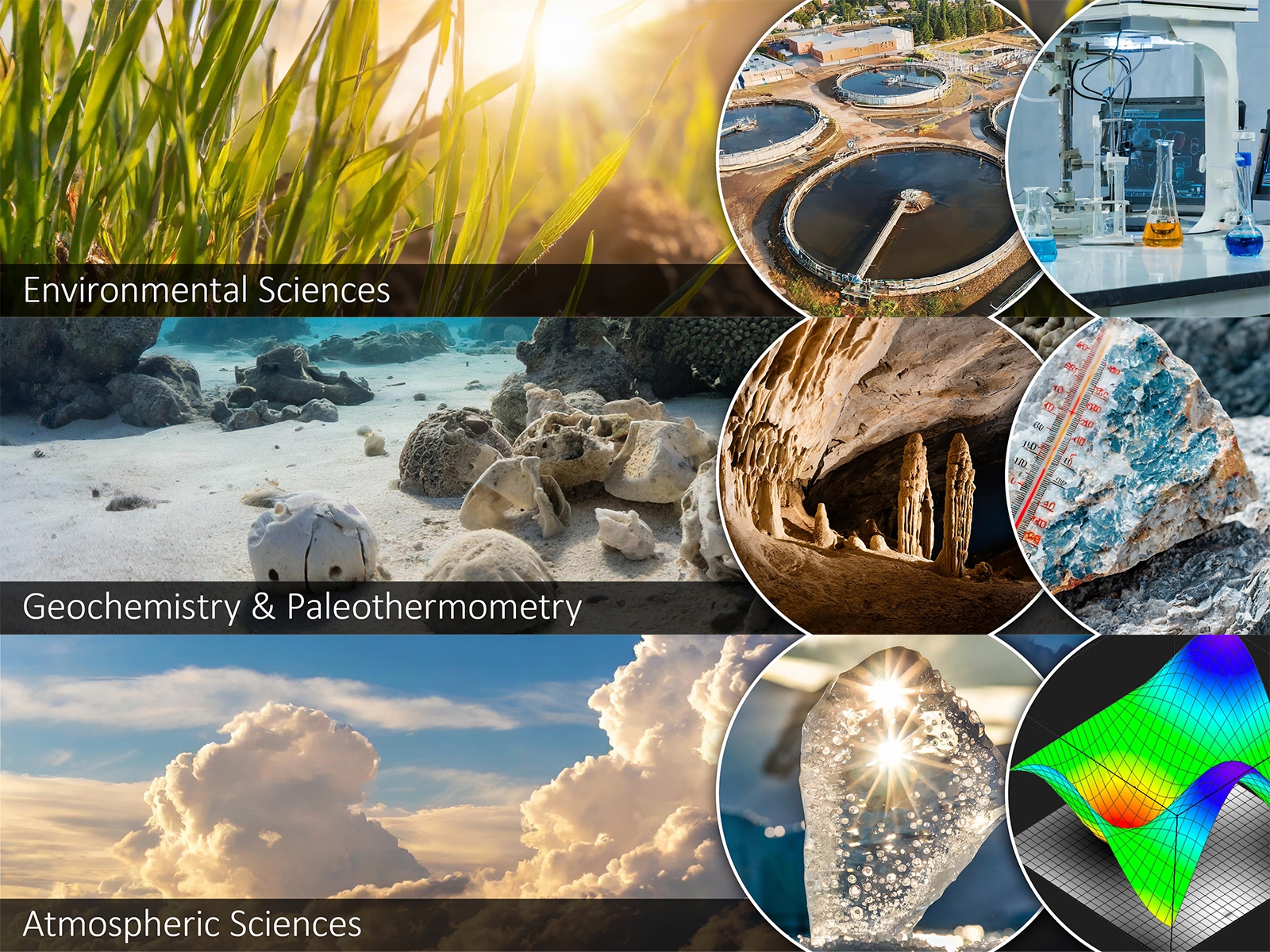Low Temperature Spectroscopy
Our group is developing cutting-edge mid-infrared quantum cascade laser absorption spectroscopy (QCLAS) techniques, equipped with a low-temperature multipass cell, to advance high-precision isotope analysis of both inorganic and organic compounds. By performing measurements at cryogenic temperatures (down to 150 K), we significantly reduce spectral interferences and enhance measurement sensitivity. This approach enables highly specific measurements even in complex gas mixtures, of reduced sample sizes and fast measurement times compared to traditional isotope ratio mass spectrometry methods. In particular, it allows for the direct, non-destructive analysis of carbon isotopic distributions in propane molecules, specifically targeting terminal and central isotopomers, as well as exploring the clumped isotope distribution of CO₂ under different temperature conditions.
Clumped Isotope Thermometry – A Novel Tool for Thermodynamic Insights
Clumped isotope thermometry allows precise determination of the formation temperature of carbonates and other geological materials without assumptions about initial isotope compositions. This innovative method enables the precise measurement of rare CO₂ isotopologues, such as ¹²C¹⁸O₂ and ¹²C¹⁶O¹⁸O, which are crucial for determining formation temperatures of carbonates and other geological materials. These advancements have substantial implications for geochemical and paleoclimate studies, providing more accurate reconstructions of past environmental conditions and improving our understanding of Earth's climate history.
Propane Isotopomer Specific Measurements
This method is the first of its kind for non-methane hydrocarbons, offering untapped potential for studying complex organic compounds. Without the need for tedious sample preparation, we achieve isotopomer-specific quantification with precision as low as 0.3 ‰ in just 100 seconds of integration time. This provides a powerful tool in both geochemical and paleoclimate research and offers a convenient way to investigate the history of natural gas formation and the climatic conditions of the past, enhancing our understanding of Earth's geological and environmental history.

-
Nataraj, A. et al: "Quantum cascade laser absorption spectrometer with a low temperature multipass cell for precision clumped CO2 measurement," Opt. Exp., 30, 4631-4641, 2022.
Publication Link -
Nataraj, A. et al: "Position-Specific Isotope Analysis of Propane by Mid-IR Laser Absorption Spectroscopy" Anal. Chem., 95 (12), 5354-5361, 2023. Publication Link
-
Tuzson, B. et al: "Unlocking the landscape of clumped and site-specific isotopes" Wiley Analytical Science Magazine, Vol. 2, 2024. Publication Link
